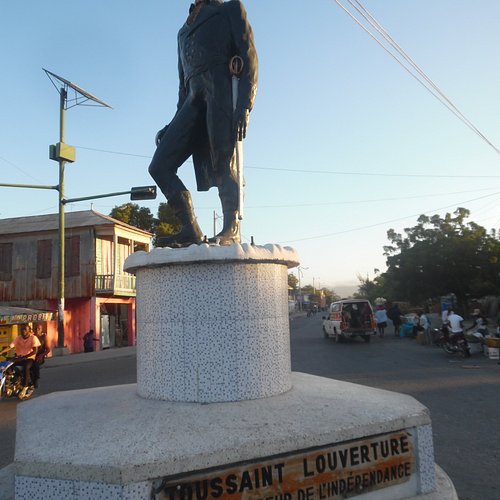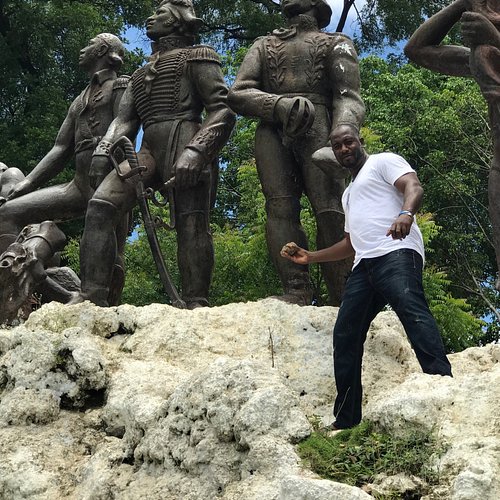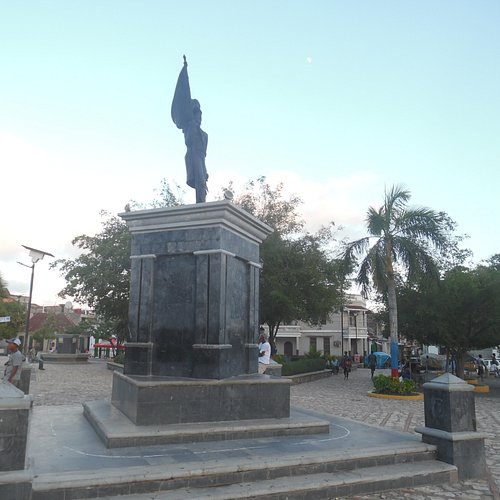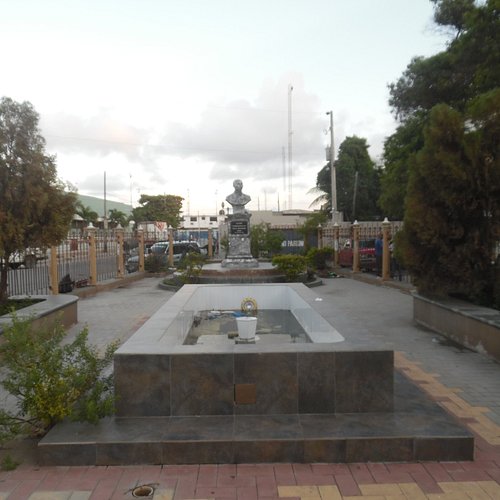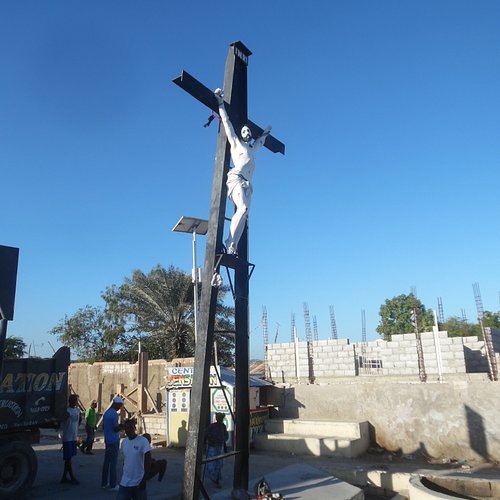Things to do in Haiti, Haiti: The Best Monuments & Statues
Coordinates: 19°00′N 72°25′W / 19.000°N 72.417°W / 19.000; -72.417
Restaurants in Haiti
1. Toussaint Louverture Statue
Overall Ratings
5.0 based on 2 reviews
Reviewed By andrewmU2655XD
The Toussaint Louverture statue is located at a busy intersection of three streets when entering the central area of Gonaives. The streets are Route National # 1, Rue Louverture and Rue Lamartiniere. The statue stands atop a three tiered base which is placed in the middle of the street. The lower tier is circular, the second is octagonal and the third is in the shape of a cylinder. The top two tiers are tiled. A plaque on the middle tier states, " Toussaint Louverture, The Precursor of Independence". The sculpture of Toussaint shows him standing with sword hanging to his left. He wears a military jacket which covers his shirt with ruffles, which was the style of that era. He also wears a bandana. I had visited a replica of this statue earlier in the day in Ennery. Toussaint was the precursor of independence, as he led the slave rebellion between 1791-1802. He initially fought against the French, and was supplied arms by the Spanish. In 1794, when France abolished slavery, he switched sides and fought for the French against the English and Spanish forces. By 1800,he had captured most of the island of Hispaniola. He struck a deal with Napoleon, which kept him in power with the promise not to interfere with the eastern section of the island (Dom Rep). In 1801, Toussaint received reports that slavery was still being practiced in the DR, and he invaded and liberated all slaves. In the following year Napoleon sent 20,000 men commanded by his best Generals to retake the island. Toussaint agreed to a peace deal after his top Generals defected to the French. He retired to his farm in Ennery. General Jean-Baptiste Brunet, who was staying in Gonaives, invited Tousaint to a meetingin June 1802, but it was a trick, and Toussaint was arrested. His family and confidants were also betrayed, and all were boarded on the Créole and Héros ships bound for France. Before departing, while shackled in chains, Toussaint made his famous statement to Captain Savari, "In overthrowing me you have cut down in Saint Domingue only the trunk of the tree of liberty; it will spring up again from the roots, for they are numerous and they are deep". On arrival in France, 50 of his supporters were sent to Corsica and 20 to Cayenne. Toussaunt was transferred to to Fort-de-Joux in the French Alps, where he died in April 1803. His remains were interred at this site. His imprisonment did not affect the outcome of the Hatian revolution, as Jacques Dessalines declared Haiti independent on 1 January 1804. The site of Toussaint's arrest is a 10 minute drive to Pont Gaudin, on a small farm near Riviere la Quinte. Ennery is a 30 km drive north west of Gonaives, and has a marker for the site of Tousaint's house and a museum dedicated to his life and the struggle for independence. This statue is a must see in Gonaives. Other statues of independence leaders include the Alexandre Petion statue, a short drive east, and Jaques Dessalines statue in Independence Park, a short walk west.
2. Heros de Vertieres
Overall Ratings
4.0 based on 17 reviews
Reviewed By Doumafis - Boston, United States
The Heros de Vertieres is a phenomenal monument that must be seen by all visitors and tourists wishing to view Haitian historical legacy at its Best. Most importantly, it is a symbol of Freedom to remind the world of the danger of slavery and its aftermath.

